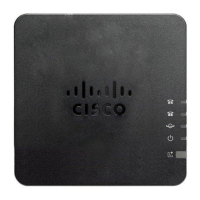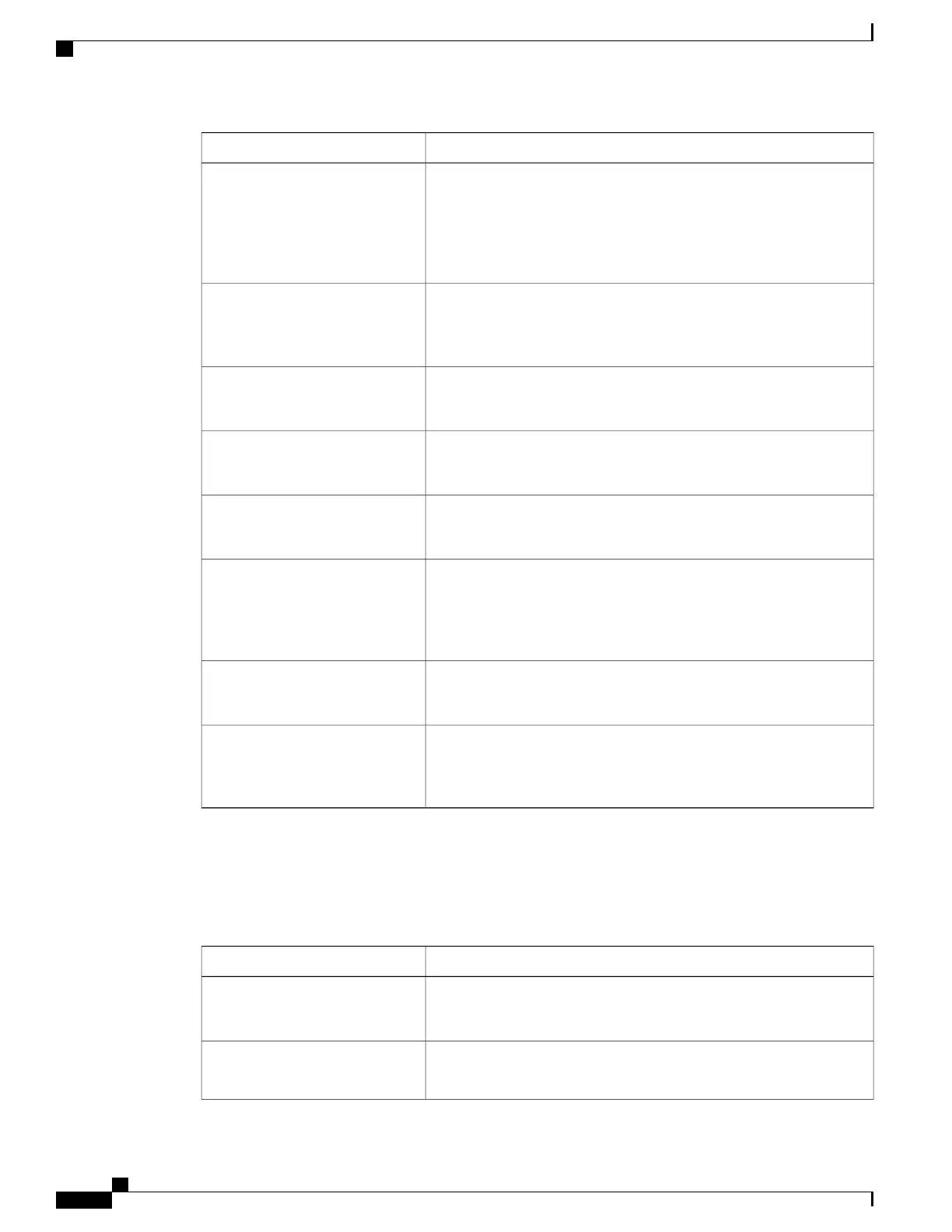DescriptionField
Alternative to the Reorder Tone played when an error occurs as a caller
makes an outbound call. The RSC to trigger this tone is configurable
on the SIP screen.
Default setting:
985@-16,1371@-16,1777@-16;20(.380/0/1,.274/0/2,.380/0/3,0/4/0)
SIT4 Tone
Played instead of the Dial Tone when there are unheard messages in
the caller’s mailbox.
Default setting: 350@-19,440@-19;2(.1/.1/1+2);10(*/0/1+2)
MWI Dial Tone
Played when all calls are forwarded.
Default setting: 350@-19,440@-19;2(.2/.2/1+2);10(*/0/1+2)
Cfwd Dial Tone
Informs the local caller that the far end has placed the call on hold.
Default setting: 600@-19;*(.1/.1/1,.1/.1/1,.1/9.5/1)
Holding Tone
Played to all parties when a three-way conference call is in progress.
Default setting: 350@-19;20(.1/.1/1,.1/9.7/1)
Conference Tone
Played when a call has been successfully switched to secure mode. Play
it for a short period - less than 30 seconds - and at a reduced level - less
than 19 dBm - so it doesn't interfere with the call.
Default setting: 397@-19,507@-19;15(0/2/0,.2/.1/1,.1/2.1/2)
Secure Call Indication Tone
Played when a feature is implemented.
Default setting: 350@-16;*(.1/.1/1)
Feature Invocation Tone
The holding tone is played on the Phone ports during the active call to
remind you of the held call.
Default setting: blank
Call Remind Tone
Distinctive Ring Patterns
Table 38: Distinctive Ring Settings
DescriptionField
Cadence script for distinctive ring 1.
Default setting: 60(2/4)
Ring1 Cadence
Cadence script for distinctive ring 2.
Default setting: 60(.8/.4,.8/4)
Ring2 Cadence
Cisco ATA 191 and ATA 192 Analog Telephone Adapter Administration Guide for Multiplatform Firmware
58
Voice Settings Configuration
Distinctive Ring Patterns

